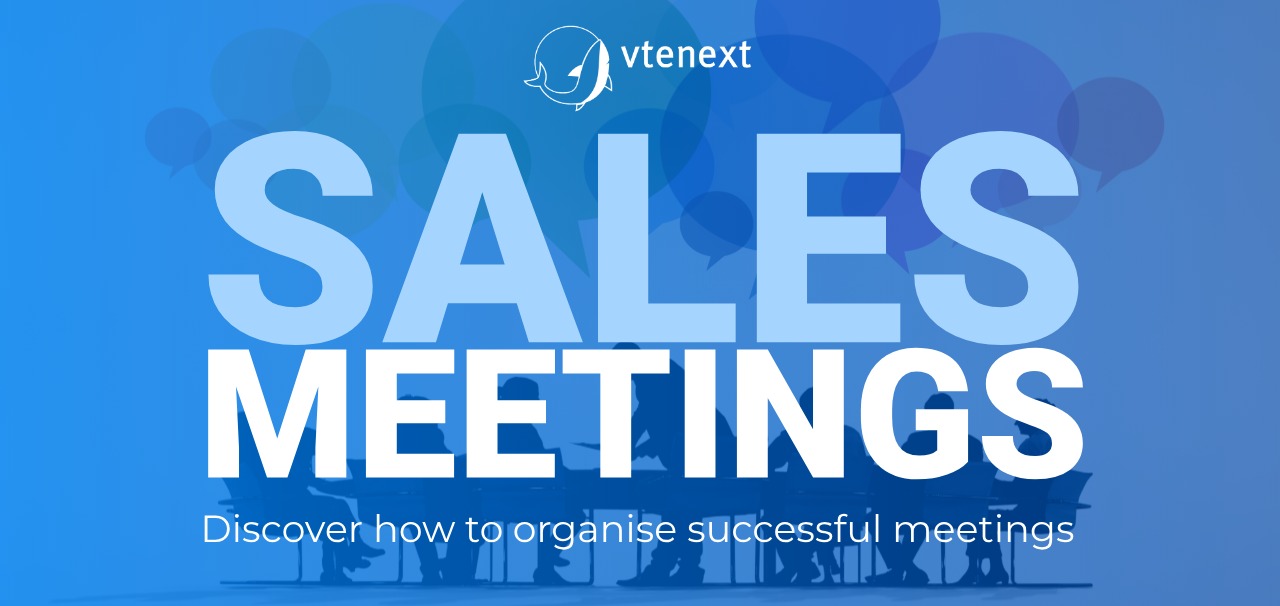Organising a sales meeting, whether it is a new or recurring activity, is an important opportunity to strengthen the team’s collaboration. Instead of filling the time with regular updates that could be communicated via email, it is opportune to focus on essential issues and stimulate an engaging discussion among group members.
These meetings are ideal to evaluate the status of the activity and create an environment in which everyone feels supported and involved: it is important to plan more productive meetings, with agendas focused on the most relevant topics. In this way, it is possible to conduct meetings that not only save time but also increase motivation and cohesion among team members. Each encounter must become an opportunity to strengthen the bonds and improve the daily performance of the whole team.
What are sales meetings
Sales meetings are those meetings organized by the sales team of a company where you meet to talk about everything related to the world of sales. It can happen to discuss about the policies and procedures to follow, how to motivate the team or to deepen the knowledge of a specific product or service of the company.
These meetings are really fundamental to the sales process. Not only do they help develop ideas for new products and services, but they are also crucial to building and maintaining strong relationships between team members. It is during the sales meeting that we notice any shortcomings or needs, allowing them to be addressed and find appropriate solutions.
The benefits of the products are also defined precisely, ensuring that everyone is prepared when it comes to presenting them to customers. In essence, sales meetings are a key moment to grow, improve and make sure you’re always on the right track in the world of sales. They are an opportunity to take stock of the situation and to synchronise the efforts of the whole group towards common goals.
How sales meetings work
Sales meetings are moments of encounter coordinated by the sales managers or other company executives. To these meetings participate not only the members of the sales team, but often also key staff from other departments such as developers and producers; sometimes new or existing customers are added to the list, making these meetings even more interesting.
The purpose of a sales meeting depends on the business context, but there are several common reasons why they are organized. One of the main goals is to motivate staff, recognising successes and setting new objectives for the team. They are also perfect occasions to discuss new products and services under development and to provide updates on existing ones. Sales meetings are also useful to identify any difficulties in the department and to study how to improve sales.
Sales meetings can be used to present new product lines and discuss marketing strategies that could attract a wider audience. In the fashion industry, for example, sales meetings could focus on how to position new garments across seasons and stores.
Unlike what one might think, these meetings don’t always have to be formal and structured; they can take place in more relaxed settings such as informal chats or conference calls. With the advent of technology, it has become increasingly common to hold sales meetings online, allowing everyone to participate comfortably, wherever they are. This flexible approach helps to keep the participation and effectiveness of each meeting high.
How to organize a sales meeting agenda
Precise and detailed agenda planning is fundamental to organize an effective sales meeting. A key starting point is to define the actions to be taken after the meeting: it is important to include concrete tasks and deadlines, such as contacting new clients or implementing new strategies, ensuring that each team member has clear tasks and that the meeting produces tangible results.
Time management is essential: assigning a time limit to each agenda point helps to avoid the meeting being prolonged and allows you to focus only on the key issues; being realistic in estimating the time required for each topic is the key to maintaining the organization of the meeting.
The topics to be covered should be specific and action-oriented; providing the team with an analysis of past performance or introducing new sales techniques can stimulate constructive dialogue. Each point should contribute to reach the meeting’s main objectives.
Clearly defining the points of discussion is crucial: by establishing what needs to be addressed, you keep the meeting focused and ensure that important topics are not overlooked; with a detailed list, it stimulates meaningful conversations between participants.
Finally, the goals must be clear from the beginning: whether it’s increasing sales, implementing new training strategies or solving specific business challenges, knowing exactly what you want to achieve helps keep the focus and makes the meeting more productive.
Following these steps, you can organize engaging sales meetings that not only stimulate the team but also help to achieve the business goals.
How to optimize the user journey
In many companies, information is shared through a variety of tools such as paper archives, internal newsletters, intranet and chat. This approach, however, easily leads to dispersion: with so many channels, employees can get lost and don’t know where to look for the necessary information. The same applies when trying to track activities during sales meetings.
To solve this problem, over time we have improved vtenext CRM with some key features designed to optimize the employee experience, among them, stands out the document module, which allows you to digitalize and easily share files, information and links. In addition, internal newsletters allow to disseminate important updates, while access to the CRM is also possible on the go, both via browser and mobile app.
System-internal chats facilitate communication between team members, promoting a more fluid exchange of information. In addition, internal FAQs facilitate the sharing of data and best practices.
Thanks to these features, users can work in an unified environment, where everyone can easily access and interact, improving the employee experience. Colleagues and collaborators can communicate and collaborate more, also facilitating the integration of newcomers into the team and in the business activities. All information is tracked and made easily accessible to users, improving overall efficiency.
In addition to the described functionalities, also CRM processes play a very important role: they facilitate the exchange of information and help define the tasks that each team member must perform to achieve common goals.
In this way, the CRM becomes a powerful tool to organize sales meetings and to define the agenda, improving collaboration and team effectiveness.

